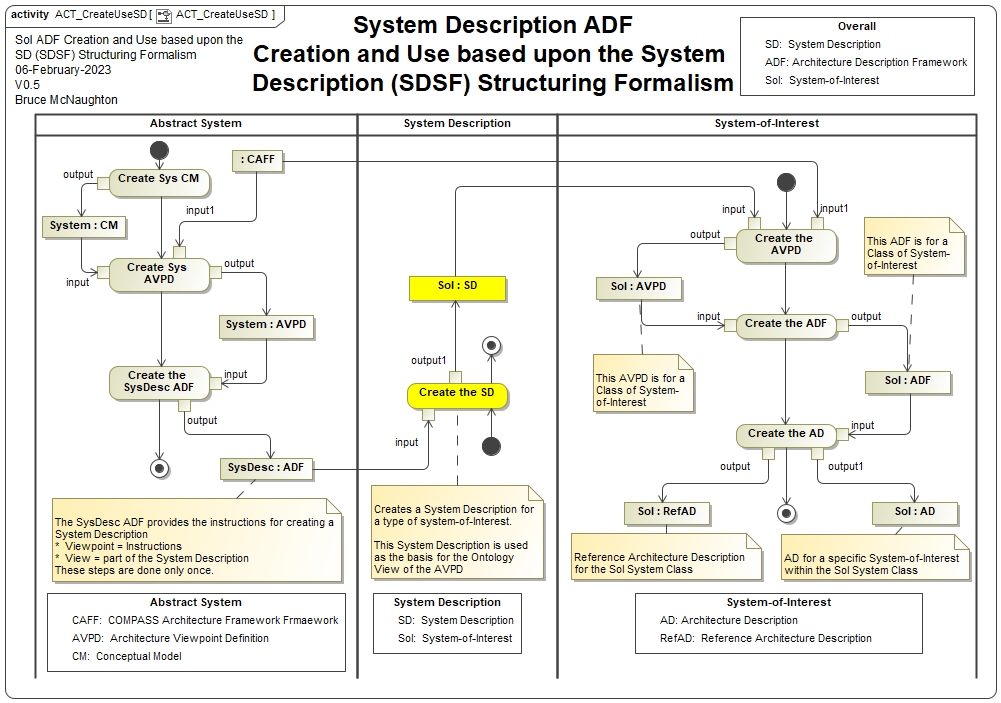System Description: Process
The System Description is a key output from using the SysDesc ADF. The System Description is a key part of the Structuring Formalism for this System Description Architecture Description Framework. The System Description (SDSF) Structuring Formalism is described in the following PDF.
PDF: Structuring Formalism: System Description (SDSF),
The overall process for the creation and use of the System Description is shown in the middle section of the next diagram:

The middle part of the diagram positions the creation of the System Description for a named system-of-interest using the SysDesc ADF.
Link to the System Description Architecture Description Framework
Create the System Description for a system-of-interest
Once the SysDesc ADF is available, a System Description can be created for any system-of-interest using the SysDesc ADF. This System Description provides coherent and consistent views of the system which can then be used to:
-
build a shared understanding of the system-of-interest across the set of stakeholders
-
establish a common language for describing the system-of-interest
-
classify the system-of-interest in a wider classification framework based upon a base classifier of the system-of-interest
-
identify areas from other system descriptions that can be reused or refined to achieve consistency across a wider set of systems
-
use in the creation of an Architecture Description Framework for this class of systems
The following are the steps to create a System Description:
NOTE: The viewpoint provides the instructions for creating a view. These tend to be linked directly from the header in the template.
-
Identify the system-of-interest for the System Description
-
Create or use a template with the headers pointing back to the viewpoints in the SysDesc ADF.
-
Identify the stakeholders and their concerns View
-
Identify the name and class View for the system-of-interest
-
Identify the purpose of the system-of-interest
-
Identify the environment (Context) View for the system-of-interest
-
The next three views and two sections may be created throughout the entire process incrementally:
-
The System Properties View
-
The Structure (Pattern of Organization) View
-
Generally in the form of a System Breakdown Structure (e.g. Figure 2 ISO 15288:2015) (see below)
-
-
The Behavior (Structural Changes) View
-
Correspondences
-
Decision and Rationale
-
Note: Templates for Correspondence, Correspondence Method, Decision and Rationale may need to be created or already exist ready for use.
-
One way to create this System Description is to get the stakeholders together using workshops to talk about the interests and concerns the stakeholders have in the area of the view and begin to structure the information in the view. The views may start as rough bullets or even rough models and then can be refined as more is learned. The more conversations the team has the better. Each conversation is creating a learning alignment around the contents of the system description.
NOTE: Some existing system descriptions may be important as both an example and learning opportunity and for connections to reuse patterns, ontology elements, etc.